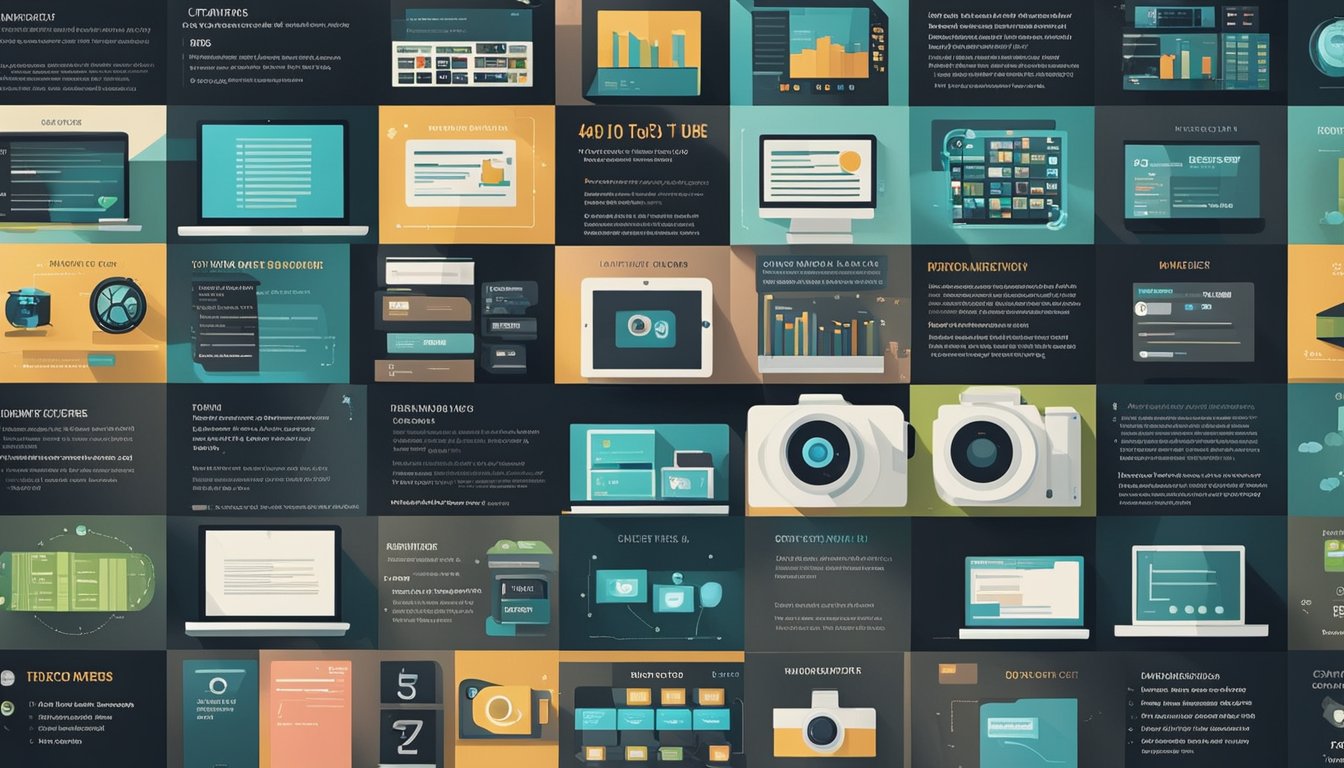Choose the Right Technology Stack with the Help of a Consultant
As a business owner, choosing the right technology stack for your project can be a daunting task. With so many programming languages, frameworks, and tools available, it can be challenging to determine which ones will best suit your needs. This is where a technology consultant can help. A consultant can provide valuable insights and guidance to help you choose the right technology stack for your project.

Understanding technology stacks is essential when choosing the right one for your business. A technology stack is a combination of programming languages, frameworks, and tools used to develop a software application. The stack is divided into two parts: the front-end and the back-end. The front-end is the part of the application that the user interacts with, while the back-end is responsible for processing data and managing the application's logic.
By working with a consultant, you can ensure that you choose the right technology stack for your business. A consultant can help you identify the factors to consider when choosing a technology stack, such as scalability, security, and performance. They can also provide examples of technology stacks and their use cases, helping you make an informed decision.
Key Takeaways
- A technology consultant can provide valuable insights and guidance to help you choose the right technology stack for your project.
- Understanding technology stacks is essential when choosing the right one for your business.
- A consultant can help you identify the factors to consider when choosing a technology stack, such as scalability, security, and performance.
Understanding Technology Stacks

As a consultant, I often get asked about how to choose the right technology stack for a project. A technology stack is a combination of software, programming languages, servers, databases, web servers, frameworks, and libraries used to build an application.
Choosing the right technology stack is critical for the success of any project. A good technology stack can make the development process smoother, faster, and more efficient, while a bad one can lead to project delays, technical debt, and even failure.
When it comes to choosing a technology stack, there are several factors to consider. One of the most important factors is the project requirements. You need to understand the project requirements, including its scope, complexity, and functionality, to determine which technology stack is best suited for the project.
Another factor to consider is the team's skills and expertise. It's important to choose a technology stack that the team is familiar with, as this can help reduce the learning curve and improve the development speed.
The scalability and performance of the technology stack are also essential factors to consider. You need to choose a technology stack that can handle the expected traffic and data volume while maintaining a high level of performance.
Finally, you need to consider the cost and availability of the technology stack. Some technology stacks require expensive licenses or hardware, while others are open source and free to use. You also need to ensure that the technology stack has a large and active community, as this can help with troubleshooting and support.
In summary, choosing the right technology stack is a critical decision that requires careful consideration of project requirements, team skills, scalability and performance, and cost and availability. As a consultant, I always recommend taking a data-driven approach to technology stack selection, evaluating each option based on its strengths and weaknesses and choosing the one that best fits the project's needs.
Role of a Consultant in Choosing a Technology Stack

As a consultant, my role in choosing a technology stack is crucial in ensuring the success of a project. Collaboration with the stakeholders is essential to understand the business requirements and goals. With this knowledge, I can evaluate the available technologies and provide recommendations that align with the project objectives.
One of the key factors that I consider is the reliability of the technology stack. It is important to choose technologies that have a proven track record and are widely used in the industry. This reduces the risk of encountering unexpected issues that could delay the project timeline or increase the cost of development.
Another important aspect is accuracy. The technology stack should be able to deliver the required functionality accurately and efficiently. This requires a thorough evaluation of the available technologies and their capabilities.
In addition to evaluating the technologies, I also consider the risks associated with each option. This includes the risk of vendor lock-in, the availability of skilled developers, and potential security vulnerabilities. By identifying and mitigating these risks, I can help ensure a successful project outcome.
Overall, my role as a consultant in choosing a technology stack is to provide unbiased and knowledgeable recommendations that align with the project objectives. Through collaboration with the stakeholders and a thorough evaluation of the available technologies, I can help ensure the success of the project.
Factors to Consider when Choosing a Technology Stack

As a consultant, I have helped various businesses choose the right technology stack for their project. Here are some important factors that should be taken into consideration when choosing a technology stack.
Product Requirements and Business Needs
Before selecting a technology stack, it is important to understand the product requirements and business needs. This includes the functionality, user experience, and architecture of the product. Additionally, the timeline and budget of the project should also be considered.
Performance and Scalability
The performance and scalability of the technology stack are crucial factors to consider. This includes the ability to handle high traffic and large amounts of data. It is important to choose a technology stack that can handle the expected load and scale as the product grows.
Efficiency and Flexibility
Efficiency and flexibility are also important factors to consider. The technology stack should be efficient in terms of development time and cost. Additionally, it should be flexible enough to accommodate future changes and updates.
Security and Licensing
Security is a critical factor to consider when choosing a technology stack. The technology stack should be secure and reliable to ensure the protection of sensitive data. Additionally, licensing is an important consideration as it can impact the overall cost of the project.
Opportunities and Strengths
The technology stack should align with the strengths and opportunities of the development team. This includes their experience and expertise in certain technologies. Additionally, the technology stack should provide opportunities for growth and development.
In conclusion, choosing the right technology stack requires careful consideration of various factors such as product requirements, performance, scalability, security, and licensing. As a consultant, I recommend evaluating each of these factors to ensure the selection of a technology stack that meets the needs of the project.
Examples of Technology Stacks and Their Use Cases

When it comes to choosing the right technology stack for your project, there are many options available. Here are some examples of popular technology stacks and their use cases:
LAMP Stack
The LAMP stack is a popular open-source technology stack that consists of Linux, Apache, MySQL, and PHP. It is widely used for creating dynamic web applications and websites. Linux is the operating system, Apache is the web server, MySQL is the database, and PHP is the programming language. This technology stack is ideal for projects that require a high degree of customization and flexibility.
MEAN Stack
The MEAN stack is another popular open-source technology stack that consists of MongoDB, Express.js, Angular, and Node.js. It is widely used for creating dynamic web applications and websites. MongoDB is the NoSQL database, Express.js is the web application framework, Angular is the front-end framework, and Node.js is the back-end runtime environment. This technology stack is ideal for projects that require real-time data processing and scalability.
MERN Stack
The MERN stack is similar to the MEAN stack but uses React instead of Angular for the front-end framework. React is a popular JavaScript library for building user interfaces. This technology stack is ideal for projects that require a high degree of interactivity and responsiveness.
Ruby on Rails
Ruby on Rails is a popular technology stack that combines the Ruby programming language with the Rails framework. It is widely used for creating web applications and websites. Ruby on Rails is known for its simplicity and ease of use. This technology stack is ideal for projects that require rapid development and prototyping.
Django
Django is a popular technology stack that combines the Python programming language with the Django framework. It is widely used for creating web applications and websites. Django is known for its scalability and robustness. This technology stack is ideal for projects that require a high degree of security and reliability.
Microsoft Azure
Microsoft Azure is a cloud computing platform that provides a wide range of services and tools for building, deploying, and managing applications and services. It is widely used for creating web applications and websites. Microsoft Azure is known for its scalability and reliability. This technology stack is ideal for projects that require a high degree of availability and performance.
Nginx
Nginx is a popular open-source web server that is widely used for serving static and dynamic content on the web. It is known for its high performance and scalability. Nginx is ideal for projects that require a high degree of concurrency and low latency.
These are just a few examples of popular technology stacks and their use cases. The right technology stack for your project will depend on your specific needs and requirements. It is always a good idea to consult with a technology stack consultant to help you make the right decision.
Frequently Asked Questions

What factors should be considered when choosing a technology stack for a project?
When choosing a technology stack for a project, several factors should be considered. The size, requirement, and complexity of the project are important to consider. The required functions, performance, and speed of the product should also be taken into account. The cost of development and maintenance should be evaluated, as well as the scalability and security of the technology stack. It is also important to consider the availability of support and contractors for major components of the project.
How do you evaluate the scalability of a technology stack?
To evaluate the scalability of a technology stack, it is important to consider how well it can handle increasing traffic and data. The ability to add more servers or resources to the stack should also be considered. It is important to ensure that the technology stack can handle the expected growth of the project without compromising performance or functionality.
What are the benefits and drawbacks of using a popular technology stack?
Using a popular technology stack can have benefits such as a large community of developers, extensive documentation, and a wide range of available resources. However, the downside is that it may not always be the best fit for a specific project. Additionally, popular technology stacks may become outdated quickly, and it may be difficult to find skilled developers who are available to work on the project.
How do you balance the need for familiarity with the desire for innovation when selecting a technology stack?
When selecting a technology stack, it is important to balance the need for familiarity with the desire for innovation. Familiarity with a technology stack can help reduce development time and costs, as well as increase the availability of resources and support. However, innovation is necessary to keep up with changing trends and to remain competitive in the market. It is important to evaluate the project's requirements and goals to determine the appropriate balance between familiarity and innovation.
What are some common mistakes to avoid when selecting a technology stack?
Common mistakes to avoid when selecting a technology stack include choosing a stack based solely on popularity, failing to consider the scalability and security of the stack, and not evaluating the project's requirements and goals. It is important to thoroughly research and evaluate different technology stacks before making a decision.
How do you ensure that your technology stack aligns with your project goals and requirements?
To ensure that your technology stack aligns with your project goals and requirements, it is important to evaluate the required functions, performance, and speed of the product. The cost of development and maintenance should also be evaluated, as well as the scalability and security of the technology stack. It is important to consider the availability of support and contractors for major components of the project. Evaluating all of these factors will help ensure that the technology stack aligns with the project's goals and requirements.

We are committed to delivering a new level of automation that will help organizations save time, money, and staffing resources.
 WRITE FOR US!
WRITE FOR US!
